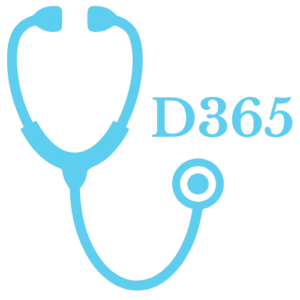Guides
aka Standard of Care
Official care instructions, direct from Microsoft’s operating room. No mystery symptoms, just clearly labeled docs and trusted methods for surviving your Dynamics 365 rounds.

List of Guides
Certification Paths
aka Prescribed Regimens
Feeling dizzy from all the Dynamics certifications out there? Don’t worry — this map is your diagnostic chart for prescribing the right exam (no co-pay required).
Certification Diagnosis Map
Role | Product Focus | Certificate Name (with Links) | Prerequisites |
Technical/Solution Architect | Azure | No formal prerequisites; familiarity with Azure services and Python recommended | |
Sales Consultant | D365 Sales | No formal prerequisites; sales process knowledge recommended | |
Customer Service Consultant | D365 Customer Service | No formal prerequisites; customer service operations knowledge recommended | |
Finance Functional Consultant | D365 Finance | No formal prerequisites; understanding of accounting principles and financial operations recommended | |
Supply Chain Consultant | D365 Supply Chain | No formal prerequisites; supply chain management knowledge recommended | |
Supply Chain Consultant | D365 Supply Chain | MB-330 certification required | |
Power Platform Developers | Power Platform | No formal prerequisites; experience with Power Platform development recommended | |
Technical/Solution Architect | D365 F&O | No formal prerequisites; experience with F&O development recommended | |
Technical/Solution Architect | Power Platform | PL-200 or PL-400 certification required | |
Technical/Solution Architect | D365 F&O | MB-310, MB-330, or MB-500 certification required | |
Cross-Platform Users | Power Platform | None | |
Cross-Platform Users | Azure AI | None | |
Beginner (Administrator) | Microsoft 365 | None | |
Beginner (Administrator) | Azure | None | |
Beginner (CRM) | Customer Engagement | None | |
Beginner (ERP) | D365 ERP | None |
Certification Prescriptions by Role
Each role has a primary certification (✅ Required), helpful prep (🟡 Recommended), and bonus certs (⭐ Bonus) for long-term growth.
Finance Functional Consultant
Certification | Code | Type | Why Take It? |
D365 Fundamentals (ERP) | MB-920 | 🟡 Recommended | Ideal for beginners; builds ERP context |
Financials Functional Consultant Associate | MB-310 | ✅ Required | Master core Finance: GL, AR, AP, budgeting |
D365 Fundamentals (CRM) | MB-910 | 🟡 Highly Recommended | Learn how to use Business Process Catalogs to map and solution complete processes like Order to Cash. |
Supply Chain Mgmt Functional Consultant Associate | MB-330 | ⭐ Bonus | Learn the essentials of planning, inventory, and logistics |
Supply Chain Mgmt Functional Consultant Expert | MB-335 | ⭐ Bonus | Validate advanced skills in warehousing and manufacturing |
Power Platform Fundamentals | PL-900 | ⭐ Bonus | Build workflows, apps, and dashboards |
Azura AI Fundamentals | AI-900 | ⭐ Bonus | Gain foundational knowledge of AI and machine learning concepts |
Supply Chain Functional Consultant
Certification | Code | Type | Why Take It? |
D365 Fundamentals (ERP) | MB-920 | 🟡 Recommended | Gives context if you’re new to ERP |
Supply Chain Mgmt Functional Consultant Associate | MB-330 | ✅ Required | Focus on inventory, logistics, and procurement |
Supply Chain Mgmt Functional Consultant Expert | MB-335 | 🟡 Recommended | Advanced SCM capabilities for manufacturing and logistics |
D365 Fundamentals (CRM) | MB-910 | 🟡 Highly Recommended | Learn how to use Business Process Catalogs to map and solution complete processes like Order to Cash. |
Power Platform Fundamentals | PL-900 | ⭐ Bonus | Automate and extend supply chain processes |
Azure AI Fundamentals | AI-900 | ⭐ Bonus | Gain foundational knowledge of AI and machine learning concepts |
Sales Functional Consultant
Certification | Code | Type | Why Take It? |
Sales Functional Consultant Associate | MB-210 | ✅ Required | Manage sales cycle, quotes, pipeline |
D365 Fundamentals (Finance & Operations Apps) | MB-920 | ✅ Required (especially if crossing over to F&O) | Understand the ERP backbone behind quotes, orders, and fulfillment |
Customer Service Functional Consultant | MB-230 | ⭐ Bonus | Cross-train across customer lifecycle |
Power Platform Fundamentals | PL-900 | ⭐ Bonus | Create sales dashboards, apps, and workflows |
Azure AI Fundamentals | AI-900 | ⭐ Bonus | Gain foundational knowledge of AI and machine learning concepts |
Customer Service Functional Consultant
Certification | Code | Type | Why Take It? |
Customer Service Functional Consultant Associate | MB-230 | ✅ Required | Case mgmt, SLA tracking, omnichannel support |
D365 Fundamentals (CRM) | MB-910 | 🟡 Recommended | Build core CRM knowledge for sales, service, and marketing apps |
Sales Consultant | MB-210 | ⭐ Bonus | Understand the handoff between sales and support |
Power Platform Fundamentals | PL-900 | ⭐ Bonus | Automate ticket routing and build agent tools |
Azure AI Fundamentals | AI-900 | ⭐ Bonus | Gain foundational knowledge of AI and machine learning concepts |
D365 Fundamentals (Finance & Operations Apps) | MB-920 | 🟡 Recommended (if connected to F&O and need dual write skills) | Understand the ERP backbone behind quotes, orders, and fulfillment |
F&O Apps Developer Associate | MB-500 | 🟡 Recommended (if connected to F&O and need dual write skills) | Extend F&O capabilities and troubleshoot dual-write integrations |
Technical/Solution Architect
Before stepping into the architect role, candidates should first earn a functional certification to ground their technical designs in real-world business processes.
Certification | Code | Type | Why Take It? |
F&O Apps Developer Associate | MB-500 | ✅ Required | Build and extend F&O apps with X++, integrations, and data entities |
F&O Apps Solution Architect Expert | MB-700 | ✅ Required | Design end-to-end solutions across finance, supply chain, and development domains |
Power Platform Developer Associate | PL-400 | ✅ Required | Connect F&O to Power Platform apps, flows, and custom components |
Azure Data Scientist Associate | DP-100 | 🟡 Recommended | Leverage ML models in Azure to drive insights and automation in enterprise solutions |
Power Platform Solution Architect Expert | PL-600 | 🟡 Recommended | Design scalable, secure, cross-cloud solutions using the full Power Platform stack |
Sales Roles at Microsoft Partners
Certification | Code | Type | Why Take It? |
D365 Fundamentals (Customer Engagement Apps) | MB-910 | 🟡 Recommended | Learn the basics of Customer Engagement in D365 |
D365 Fundamentals (Finance & Operations Apps) | MB-920 | 🟡 Recommended | Understand the core Finance & Ops concepts in D365 |
Power Platform Fundamentals | PL-900 | 🟡 Recommended | Build low-code apps and workflows for business solutions |
Azure AI Fundamentals | AI-900 | 🟡 Recommended | Gain foundational knowledge of AI and machine learning concepts |
Microsoft 365 Fundamentals | MS-900 | ⭐ Bonus | Explore collaboration, security, and productivity tools in the M365 ecosystem |
Azure Fundamentals | AZ-900 | ⭐ Bonus | Understand core Azure services, pricing, and cloud computing concepts |
Certification Documentation by Product
Use the table below to access official Microsoft documentation for each Dynamics 365 product area.
| Product Documentation |
| Finance |
| Supply Chain Management |
| Sales |
| Customer Service |
| Commerce |
| Project Operations |
| Human Resources |
| Field Service |
| Power Platform |
Exam Study Guide
aka Therapy Plan
Getting certified in Dynamics 365 can feel like a big step, but it doesn’t have to feel overwhelming. Whether you’re just getting started or have been working with D365 for a while, the most important thing is to focus on understanding how the system works in real business scenarios. It’s not as much about memorizing screens or labels—it’s more about knowing how to use the system to solve problems. Here are a few things I always share with learners preparing for these exams:
🔍 It’s All About Scenarios
If you’re expecting a lot of questions about definitions, you’re going to be surprised. Most questions are framed around real-world situations: “The business needs to do X—what should you configure and why?” So as you study, try to think through business scenarios. What happens when a payment fails? What kind of pricing would you use in this scenario? That kind of thinking will take you further.
🧠 Learn in the Way That Works for You
Everyone processes information differently. I tend to take a lot of notes and draw diagrams—it helps me see how different pieces of D365 connect. If you’re more of a hands-on learner, spin up a trial environment and explore. The key is to build connections—between entities, between modules, between business needs and system features.
🕰 Take Your Time
You’re learning a platform that supports real business operations, so it’s okay if it takes time. And if you don’t pass the first time? Please don’t let that shake your confidence. It happens to so many people (myself included). Learn from it, adjust your approach, and try again.
💬 Note: The terms F&O (Finance and Operations) and FSCM (Finance and Supply Chain Management) are used interchangeably throughout this page. They refer to the same suite of apps in Dynamics 365.
📘 There Are Four Key Study Resources
When preparing for a Dynamics 365 certification, you’ll rely on these four core Microsoft resources:
1- Microsoft Certification Pages
These give you the exam overview, list of skills measured, and access to practice assessments.
2- Microsoft Learn Learning Paths
These are free, self-paced modules that guide you through the system’s functionality and business logic.
3- Microsoft Product Documentation
💡 If you’re studying for a 900-level fundamentals exam (like MB-910, MB-920, PL-900, or AI-900), you can likely pass using Microsoft Learn alone—without deep documentation review.
For associate- and expert-level exams, I feel like you’ll need to go beyond Microsoft Learn. Microsoft is required to create the exam questions on the official product documentation—so this is where all the exam questions will be from.
4- Study Guides
Each exam includes a Microsoft Study Guide that lists every topic you’re expected to master. This is very helpful and should be used as a checklist.
📌 Once you see a topic in the study guide—like “Create and apply product templates”—you can then use the documentation to explore it.
Example Certification Walkthrough
Now that you know the four key study resources, let’s walk through a real example of how to use them in practice. Below is a step-by-step guide for preparing for the MB-330 Supply Chain Functional Consultant exam—from first look to final booking.
✅ Step 1: Understand the Exam
Start by reviewing the official exam page to understand:
- The exam’s purpose and intended audience
- Key functional areas it covers
- The format and types of questions you’ll see
✅ Step 2: Review the Study Guide
Microsoft provides an official study guide that lists every topic you are expected to master. Use this as your master checklist.
📌 Once a topic appears in the guide—like “Create and apply product templates”—you’ll need to explore all related documentation. The exam questions are created from that content.
✅ Step 3: Follow the Microsoft Learn Learning Paths
Use these curated, self-paced paths to build your foundational understanding of key modules.
Start with:
✅ Step 4: Use Microsoft Product Documentation
For associate-level exams like MB-330, Microsoft is legally obligated to base questions on the product documentation—not just Learn content.
You’ll need to use the Docs to understand configuration steps, exceptions, and advanced options. This is where real exam depth comes from.
📘 D365 Supply Chain Documentation
Start by searching for each topic listed in the study guide, and take notes on configuration, use cases, and variations.
✅ Step 5: Practice Hands-On in a Trial Environment
- Sign up for a free Dynamics 365 trial or use your company’s sandbox
- Try configuring products, setting up item groups, running master planning, and managing warehouses
- Practice solving real-world scenarios using the exam guide as prompts
✅ Step 6: Take the Practice Assessment
Microsoft’s official practice tests help you simulate the real exam and identify gaps in your knowledge.
✅ Step 7: Schedule Your Exam
Once you’re scoring consistently high and feel confident navigating real-world scenarios, book your exam:
Microsoft FastTrack for Dynamics 365
aka Preventive Care Protocol
What is Microsoft FastTrack?
Microsoft FastTrack is a customer success program from Microsoft designed to help you get up and running smoothly with your Dynamics 365 implementation. Think of it as part of your extended care team—offering expert guidance, diagnostics, and treatment plans to help your system stay healthy and deliver results faster.
How Does FastTrack Work?
FastTrack support follows a four-phase framework you can think of like a care model:
- Initiate – Diagnose your needs and help define a clear plan for transformation.
- Implement – Guide you in modeling your solution, migrating your data, and configuring your system.
- Prepare – Assist with testing strategy, user readiness, and cutover planning.
- Operate – Share strategies to monitor performance, encourage user engagement, and support long-term health.
You’ll be working with Microsoft experts—solution architects and engineers—who act like specialists, offering support throughout your deployment journey.
Why Customers Love FastTrack
- Saves Time: Helps you fast-track your implementation with trusted protocols.
- Reduces Risk: Offers preventive care through proven best practices.
- Controls Costs: Avoids costly complications through early intervention.
- Boosts Adoption: Empowers your team like a well-run clinical training session.
Do You Qualify for FastTrack?
FastTrack services are included at no extra cost, provided you meet a few criteria:
- You need a minimum annual spend on Dynamics 365 licenses (for new deployments).
- You must work with a qualified partner—a Solutions Partner for Business Applications with at least two eligible projects completed.
- Your partner should complete Success by Design training before the project begins.
Even if you’re not eligible, Microsoft still offers great self-service resources:
- On-demand Success by Design training
- TechTalks on core implementation topics
- Go-live readiness checklists for Dynamics 365 applications
Check your eligibility here: FastTrack Eligibility Guide
Helpful FastTrack Resources
Here are a few links we recommend:
How to Get Started with FastTrack
- Check Eligibility: Confirm your licensing and project setup qualifies.
- Talk to Your Microsoft Account Manager: They’ll help initiate the process.
- Meet Your FastTrack Manager: Your dedicated guide will help with every stage.
Everything is clearly outlined here: FastTrack for Dynamics 365
Working Together: You, Your Partner, and FastTrack
Just like a good care team, your success with Dynamics 365 relies on coordination between your team, your implementation partner, and the FastTrack specialists. Here’s how to keep everyone aligned:
- Clarify Roles Early On
- You and your team: Own your business processes and decisions.
- Your partner: Handles configuration, development, and day-to-day treatment.
- FastTrack: Offers high-level consultation and proven care pathways.
- Hold a Joint Kickoff Meeting
This is your first exam room visit with the full team:
- Align on the treatment plan (scope, timeline, goals)
- Define communication and escalation protocols
- Clarify who handles what
- Build One Unified Plan
Think of this like building a shared care plan:
- Identify critical phases like environment setup and go-live
- Coordinate timing and resources
- Establish clear check-ins
- Keep Communication Flowing
Schedule regular rounds:
- Weekly or bi-weekly syncs
- Milestone reviews
- Ad-hoc consults when issues arise
- Use FastTrack Where It Counts Most
FastTrack is like your clinical specialist—engage them for:
- Data migration diagnostics
- Architecture reviews
- Go-live planning support
- Stay Ahead of Risks
- Maintain a shared risk log like a patient chart
- Assign owners for issue resolution
- Use FastTrack as a second opinion for tricky scenarios
- Make Adoption a Team Effort
- Develop training plans that mirror patient education strategies
- Engage users early and often
- Track progress and adapt as needed
- Don’t Forget Post-Go-Live Care
- Handoff to internal IT for long-term management
- Plan ongoing optimization and pulse checks
FastTrack is a vital part of keeping your Dynamics 365 project on a healthy path. With the right coordination, it becomes the preventive care program your rollout deserves.
Government Funding Programs for Dynamics 365 Training in Canada
aka Financial Aid Clinic
Overview of Funding Opportunities
Many Canadian organizations investing in Dynamics 365 training and digital transformation may qualify for government funding that helps offset training costs. Several programs across Canada are designed to support workforce development and technology adoption by reimbursing a portion of third-party training expenses, such as those associated with the IBI platform. Below are two of the most commonly used options for D365 and digital upskilling programs.
Option 1: Canada Job Grant (CJG) and Provincial Equivalents
The Canada Job Grant (CJG), along with its provincial counterparts (e.g., Ontario Job Grant, Alberta Job Grant), is specifically designed to reimburse employers for third-party training costs that directly improve employee skills. ERP training and digital upskilling are explicitly recognized as eligible training under most provincial guidelines. Training can be delivered by an external provider like IBI, and self-paced or online formats are generally acceptable, provided there is a clear structure, defined learning paths, and tracking of completion.
Typical Coverage
- Covers two-thirds of eligible training costs, up to $10,000 per employee (in some provinces, up to $15,000).
- The employer must pay the remaining one-third of the costs.
- For small businesses with fewer than 100 employees, employer contributions can sometimes be reduced to as low as 20%.
Conditions to Meet
- Training must lead to improved skills related to the employee’s current or future role. Assessments and completion tracking may be required to demonstrate skill improvement (as with IBI programs).
- A training plan, invoice, and details about learning outcomes need to be provided.
- The training provider must have a business registration and offer a clear description of the program.
Official Information:
Option 2: National Research Council’s Industrial Research Assistance Program (NRC IRAP)
The National Research Council’s Industrial Research Assistance Program (NRC IRAP) supports Canadian small and medium-sized enterprises (SMEs) that are implementing or adopting new technologies, such as ERP systems, automation, or digital transformation initiatives. IRAP funding can cover a portion of project labor and subcontractor costs related to technology adoption.
To take advantage of this program, companies must ensure that the training cost is included as part of their overall ERP implementation budget—specifically under categories like “training and change management” or “user enablement.” Standalone training engagements, which are not tied to a larger project, typically do not qualify. However, when training is integrated into a funded ERP initiative, these costs can be covered.
Official Information:
Summary and Recommendations
Both programs can substantially reduce training costs for Canadian employers while supporting digital readiness and workforce development. If your organization is planning a D365 implementation or a skills-upgrade project, it is advisable to explore these funding options early in the planning process. Preparing documentation such as training plans, curricula, and completion records can help strengthen your application.





